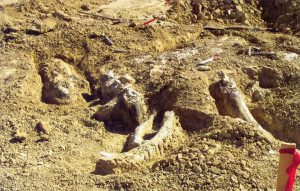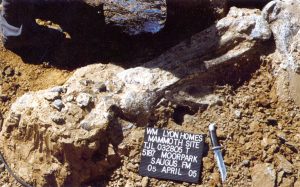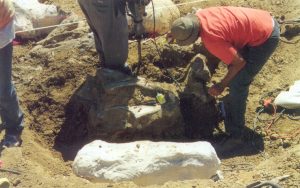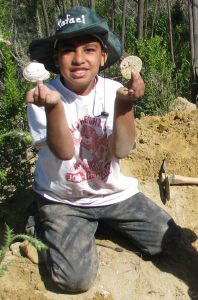The Oxnard Gem & Mineral Society is an official National Fossil Day Partner.
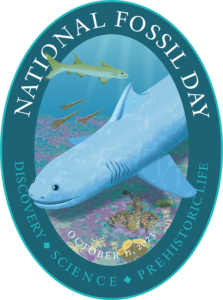
“Trimble’s shark” is a member of the ctenacanth shark family, a group of sharks that first appeared during the Devonian period (approximately 400 million years ago); this group went extinct at the end of the Permian period (252 mya). The name “ctenacanth” translates to “comb-spine”, which is derived from the prominent dorsal fin spines that bear comb-like denticles on the back of the spines, near the apex. It is one of these new shark species was found by Mammoth Cave National Park Superintendent Barclay Trimble.
 The National Park Service and the American Geological Institute are partnering to host the annual National Fossil DayTM on October 11, 2023 during Earth Science Week.
The National Park Service and the American Geological Institute are partnering to host the annual National Fossil DayTM on October 11, 2023 during Earth Science Week.
National Fossil DayTM is a celebration organized to promote public awareness and stewardship of fossils, as well as to foster a greater appreciation of their scientific and educational value.
How To Participate:
20 Ideas to Discover Fossils – Learn about fossils and paleontology in National Parks.
Prehistoric Life in National Parks Coloring Book – featuring 40 drawings of ancient plants and animals that have been found fossilized in national parks.
Dinosaurs!—Prehistoric Life in National Parks & NNLs Coloring Pages – 15 individual coloring book pages.
Rocks and Minerals – Learn about Rocks, Minerals and Beach Materials. Watch featured video “Rock or Mineral – What’s the Difference”.
National Park Paleontology Newsletter – serves to communicate information related to National Park fossil interpretation, protection, resource management, new discoveries, and issues related to the world of paleontology and paleontological resources management.
Ventura County is home to a wide range of fossils
S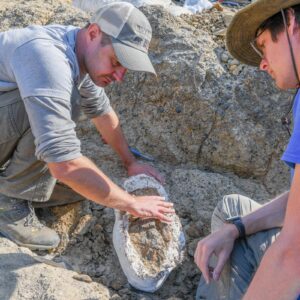 ea Cow
ea Cow
In 2017 and 2018, Dr. Jonathan Hoffman from the Santa Barbara Museum of Natural History excavated the skull and skeleton of a potentially new species of sea cow on Santa Rosa Island. The fossils from that excavation also include mollusks and crabs that give researchers clues to what the environment was like millions of years ago.
Columbian Mammoth?
In September 2016, it was announced that the skull and tusks of “Larry” was discovered on Santa Rosa Island. The find appears to be a young Columbian Mammoth. Further research will be needed to confirm if it is a Pgmy, Columbian or something in between. The nickname honors the discoverer, Peter Larramendy, and leading mammoth expert Larry Agenbroad.
Pygmy Mammoth
The most complete Pygmy Mammoth ever found, was discovered in 1994, on Santa Rosa Island. A replica can be seen for free at the Channel Islands National Park Visitors Center.
“Emma” The Moorpark Mammoth
In April 2005, a Southern Mammoth fossil was discovered in Moorpark during the construction of new homes. In the same location, parts of a Columbian Mammoth, Western horse, a large-headed llama, a rabbit, a kangaroo rat and other rodent ancestors were discovered. A Mammoth Sculpture for Kids to Play on is a feature of the Mammoth Highlands Park in Moorpark.
Photos courtesy of WM Lyons Homes
- “Emma” The Moorpark Mammoth
- Documenting the Find
- Fossil wrapped in protective plaster before removal
The Oxnard Gem & Mineral Society organizes local Field Trips to collect clam shells and whale fossils.
As part of the Tri-County Education Committee, we have donated two general Fossil Boxes to the Ventura County Library System. These Boxes are available for Educators to check out.

